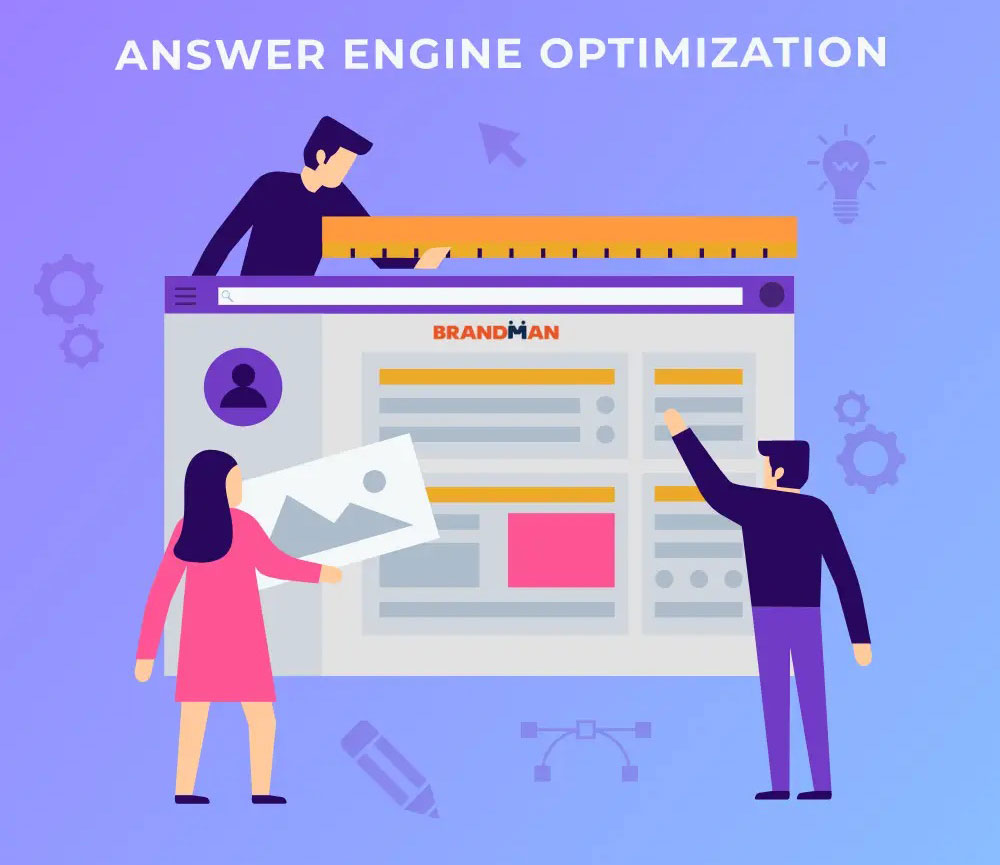How to Optimize a Website for AEO, Step-by-Step.
August 22, 2025

In today's fast-evolving digital landscape, simply ranking high isn't enough. Users are looking for instant answers, and search engines are evolving to provide them directly. This is where Answer Engine Optimization (AEO) becomes your website's secret weapon. But how do you actually implement AEO on your website?
If you're asking "How to optimize a website for AEO?", you're in the right place. We'll break down the process into clear, actionable steps, transforming your site into an answer hub that drives visibility, qualified traffic, and authority.
1. How Do You Identify the Right Questions for AEO Optimization?
The foundation of effective AEO lies in understanding your audience's exact queries. This isn't just about keywords; it's about questions.
- Utilize Google's "People Also Ask" (PAA) Boxes: When you search for a topic relevant to your business, Google often displays a "People Also Ask" section. These are direct questions users are posing, and they are goldmines for AEO. Expand them to find even more related queries.
- Explore "Searches Related To" at the Bottom of SERPs: Google also provides suggestions for related searches at the bottom of its results pages. Many of these are implicitly or explicitly question-based.
- Leverage Question-Based Keyword Tools: Tools like AnswerThePublic, Ahrefs' Questions report, and Semrush's Keyword Magic Tool allow you to filter results specifically for questions containing "how," "what," "why," "can," "should," etc.
- Mine Internal Data & Customer Interactions: Your website's own search logs, customer support tickets, email inquiries, and common questions asked by your sales team are invaluable direct sources of user questions. Listen to your customers!

2. How Should Content Be Structured for AEO Optimization?
Once you have your target questions, the next crucial step is presenting the answers in a way search engines can easily understand and extract.
- Provide Direct Answers Immediately: For each question you aim to answer, give a concise, direct answer (typically 2-3 sentences) right after the question-formatted heading. This is the snippet-winning sweet spot.
- Use Question-Based Headings (H1, H2, H3): Format your page headings as actual questions (e.g., "What is AEO?" or "How does AEO improve website traffic?"). This explicitly tells search engines what you're discussing.
- Favor Lists and Tables: Search engines love to pull information from bulleted lists, numbered lists, and well-structured tables for featured snippets. Use them to break down complex processes or compare information, as they are easily digestible.
- Prioritize Clarity and Conciseness: Write simply and avoid jargon. Get straight to the point in your answers. Long, winding sentences make it harder for search engines to extract information.
- Create Dedicated FAQ Sections: If you have multiple related questions, a dedicated FAQ page or section on a relevant service page is excellent for AEO.

Beyond content structure, specific technical signals help search engines understand your answers.
- Implement Schema Markup: This is critical. Schema.org markup provides structured data that explicitly tells search engines what information is on your page.
- FAQPage Schema: Use this for your FAQ sections. It can enable rich results where questions and answers are expandable directly in the SERP.
- HowTo Schema: Perfect for step-by-step guides, helping Google display rich results for procedural queries.
- Question and Answer Schema Types: Can be used within other schemas or directly to highlight Q&A pairs.
- (Developer Note): This JSON-LD code typically goes in the <head> or <body> of your HTML, often generated by SEO plugins for CMS platforms like WordPress.

No matter how well you structure it, poor quality content won't rank or get featured.
- Be the Best Answer: Your content must be comprehensive, accurate, and truly helpful. Google aims to provide the best answer, so strive for that.
- Demonstrate Expertise, Authoritativeness, Trustworthiness (E-A-T): Ensure your content is written by or reviewed by experts. Back up claims with data or reputable sources.
- Keep it Updated: Regularly review and update your content to ensure answers remain current and accurate. Outdated information won't win snippets.

AEO isn't a one-and-done task; it requires ongoing monitoring and adaptation.
- Track Featured Snippet & PAA Performance: Use tools like Google Search Console to monitor which of your pages are appearing for featured snippets or in PAA boxes. Look at impressions and CTR for these features.
- Analyze User Behavior: Use Google Analytics to see if traffic from AEO features is more engaged (lower bounce rate, higher time on page) and if it leads to conversions.
- Monitor Competitors: See which competitors are winning the snippets you're targeting. Analyze their content structure and the clarity of their answers to learn and improve your own.
- Iterate and Optimize: Based on your findings, continuously refine your answers, try different phrasing, or add more details to improve your chances of being featured.

Optimizing your website for AEO is a strategic move that aligns your content directly with how modern users search. By systematically identifying questions, structuring clear answers, implementing technical markup, and maintaining high-quality content, you can unlock unparalleled visibility and drive highly qualified traffic.
Category: Search Engine Optimization (SEO) , Technology
Tags: AEO , Analytics , Answer Engine Optimization , Beginner’s Guide to AEO , Content Marketing , Conversational Search , Core Web Vitals. , digital marketing , Digital Marketing Tips , Featured Snippets , Google Search Console , How To Optimize Website , Mobile Optimization , Natural Language Processing (NLP) , online presence , Optimization Checklist , Page Speed Optimization , Rich Results , Schema Markup , Search Intent , Semantic SEO , SEO , SEO Best Practices , Step by Step Guide , Structured Data , Technical SEO , Voice Search Optimization , Website Optimization , Website Optimization Tutorial , Website Strategy
 Posted by
Posted by 
Comment on this post
Your email address will not be published.